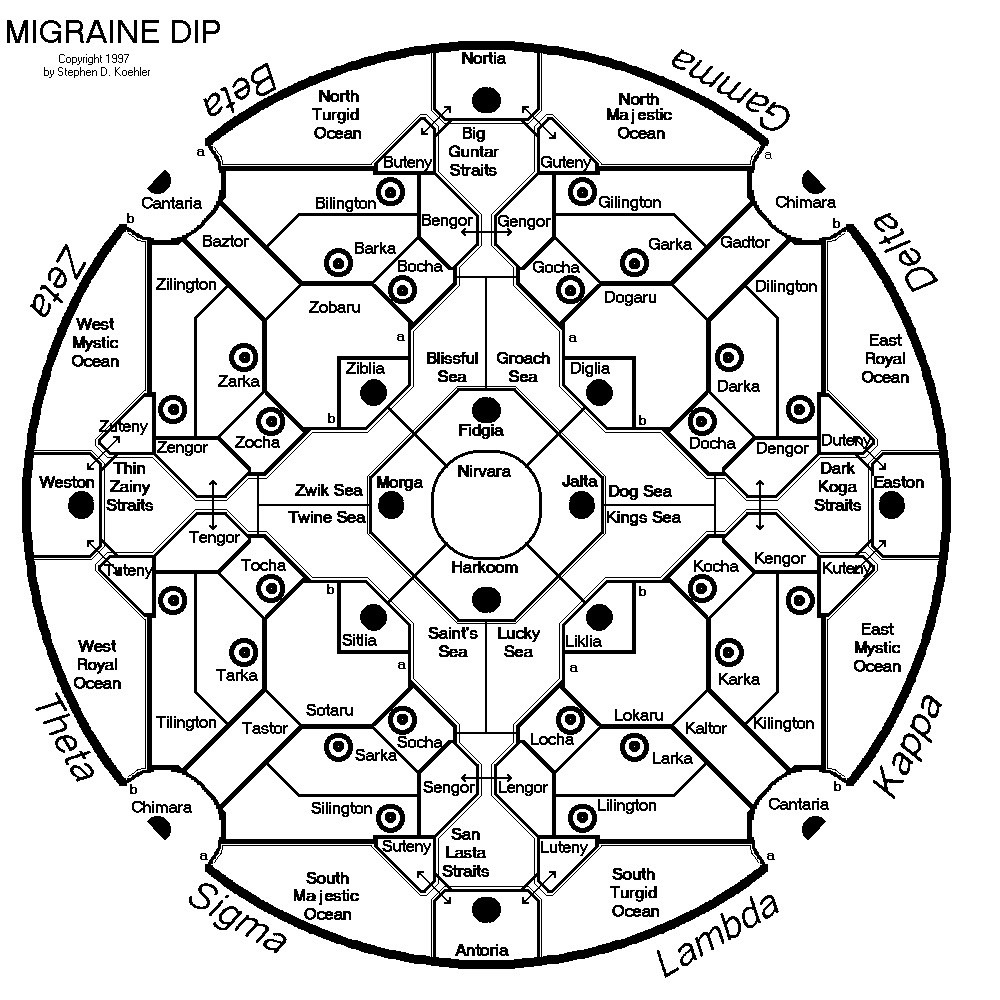


Imagine: you sit down at AvalonCon or Origins and get ready for a grueling eight-hour slugfest in the first round of the Dip tourney. You reach into the box, held high over your head, and pray: "France, please let it be France. Or England, I'll take England. I'll even take Turkey. Please, please, please, please, please!" You find a plastic anchor and pull down your have and, with trepidation, unclench your fist so that only you can see the result: Red! "Argh! Austria!" you scream. Well, at least the tourney is best two out of three!
I have often gotten into discussions with people about "game balance", weak powers versus strong ones, and such. Who hasn't had the feeling described above? Whether you hate Germany, Italy or Austria in Diplomacy, China or France in Colonial, or Milan or Florence in Machiavelli, there are certain countries that you would rather not play, or, at least, those you find difficult to win with.
I've been toying with a concept, which I suppose is not original, of inventing a Diplomacy variant that removes the luck of the draw from the game. What would such a variant look like? How would it work?
There were several concepts that seemed to work well. First, everyone had to be in a similar position at the beginning of the game. That seemed to me to dictate a circular board, with the players arranged around the outside edge. There could be no central powers. If fact, every power should be identical.
I scribbled on a napkin while drinking coffee and realized that simply having the players all look the same and all face, say, clockwise, was rather boring. It also meant, if there were seven players, dividing the circle into seven pie pieces, each identical, and placing a player on each slice. This did not seem satisfying since it resulted in little interaction between the slices. It also meant each territory would be identical to six others.
On the second cup, I scribbled some more, and realized that I could attain equality of position even if all players were not strictly identical. As long as they were symmetrical, the fairness issue would be solved. This meant making the player's territories mirror images of each other, with two players located on each slice. This, in turn, meant that there had to be an even number of players. I decided on eight.
I quickly realized that a player would still be faced with two players to contend with. There would be no direct interaction with the others. This was more difficult to solve. The center of the circle could be opened and neutrals placed there, but still confrontation would be with your neighbors as they pinched your progress to the center.
My solution was to allow travel across the perimeter of the circle, to the opposite side. This immediately doubled the potential allies/foes. Scatter some neutral supply centers around the perimeter, and some wild possibilities emerged.
I tried to make the proportions of land territories to seas basically equivalent to regular Diplomacy, but with eight players, it had to be a little bigger. The more I look at the game, and try to imagine how it might play out, the more confused I get. Hence, the name, Migraine Dip!
Well, below is my offering for your consideration. Click on the map for a larger view.
The game is played with eight Players:
|
Stephen D. Koehler ([email protected]) |
If you wish to e-mail feedback on this article to the author, and clicking on the envelope above does not work for you, feel free to use the "Dear DP..." mail interface.

